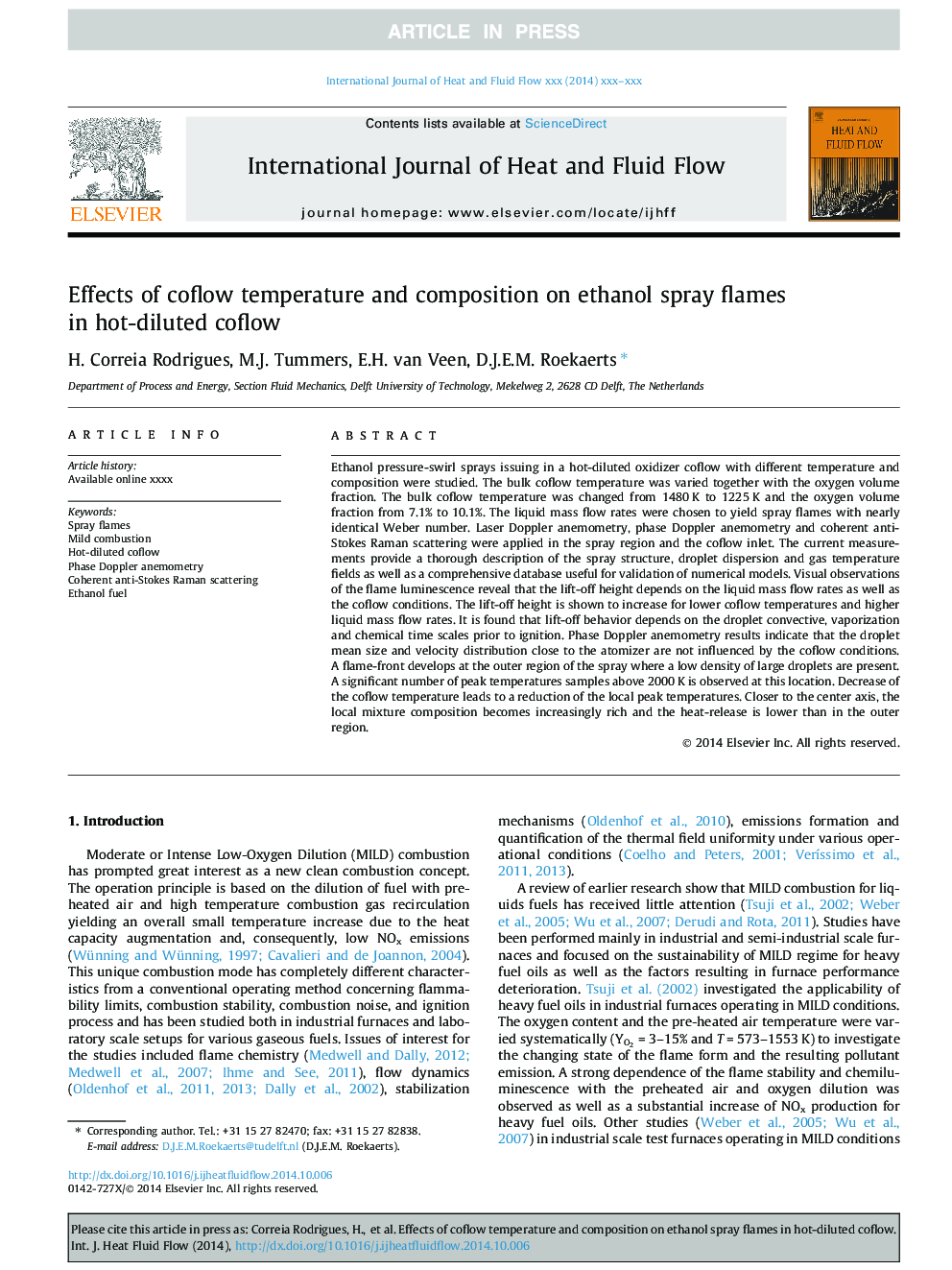| کد مقاله | کد نشریه | سال انتشار | مقاله انگلیسی | نسخه تمام متن |
|---|---|---|---|---|
| 655221 | 1457630 | 2015 | 15 صفحه PDF | دانلود رایگان |
عنوان انگلیسی مقاله ISI
Effects of coflow temperature and composition on ethanol spray flames in hot-diluted coflow
ترجمه فارسی عنوان
اثرات دما و ترکیب ترکیبات بر روی شعله های اسپری اتانول در جریان انجماد داغ
دانلود مقاله + سفارش ترجمه
دانلود مقاله ISI انگلیسی
رایگان برای ایرانیان
کلمات کلیدی
اسپری آتش، احتراق خفیف، سرماخوردگی داغ، آنالایزر داپلر فاز، پراکندگی رامان ضد استوکس منسجم، سوخت اتانول،
موضوعات مرتبط
مهندسی و علوم پایه
مهندسی شیمی
جریان سیال و فرایندهای انتقال
چکیده انگلیسی
Ethanol pressure-swirl sprays issuing in a hot-diluted oxidizer coflow with different temperature and composition were studied. The bulk coflow temperature was varied together with the oxygen volume fraction. The bulk coflow temperature was changed from 1480Â K to 1225Â K and the oxygen volume fraction from 7.1% to 10.1%. The liquid mass flow rates were chosen to yield spray flames with nearly identical Weber number. Laser Doppler anemometry, phase Doppler anemometry and coherent anti-Stokes Raman scattering were applied in the spray region and the coflow inlet. The current measurements provide a thorough description of the spray structure, droplet dispersion and gas temperature fields as well as a comprehensive database useful for validation of numerical models. Visual observations of the flame luminescence reveal that the lift-off height depends on the liquid mass flow rates as well as the coflow conditions. The lift-off height is shown to increase for lower coflow temperatures and higher liquid mass flow rates. It is found that lift-off behavior depends on the droplet convective, vaporization and chemical time scales prior to ignition. Phase Doppler anemometry results indicate that the droplet mean size and velocity distribution close to the atomizer are not influenced by the coflow conditions. A flame-front develops at the outer region of the spray where a low density of large droplets are present. A significant number of peak temperatures samples above 2000Â K is observed at this location. Decrease of the coflow temperature leads to a reduction of the local peak temperatures. Closer to the center axis, the local mixture composition becomes increasingly rich and the heat-release is lower than in the outer region.
ناشر
Database: Elsevier - ScienceDirect (ساینس دایرکت)
Journal: International Journal of Heat and Fluid Flow - Volume 51, February 2015, Pages 309-323
Journal: International Journal of Heat and Fluid Flow - Volume 51, February 2015, Pages 309-323
نویسندگان
H. Correia Rodrigues, M.J. Tummers, E.H. van Veen, D.J.E.M. Roekaerts,
